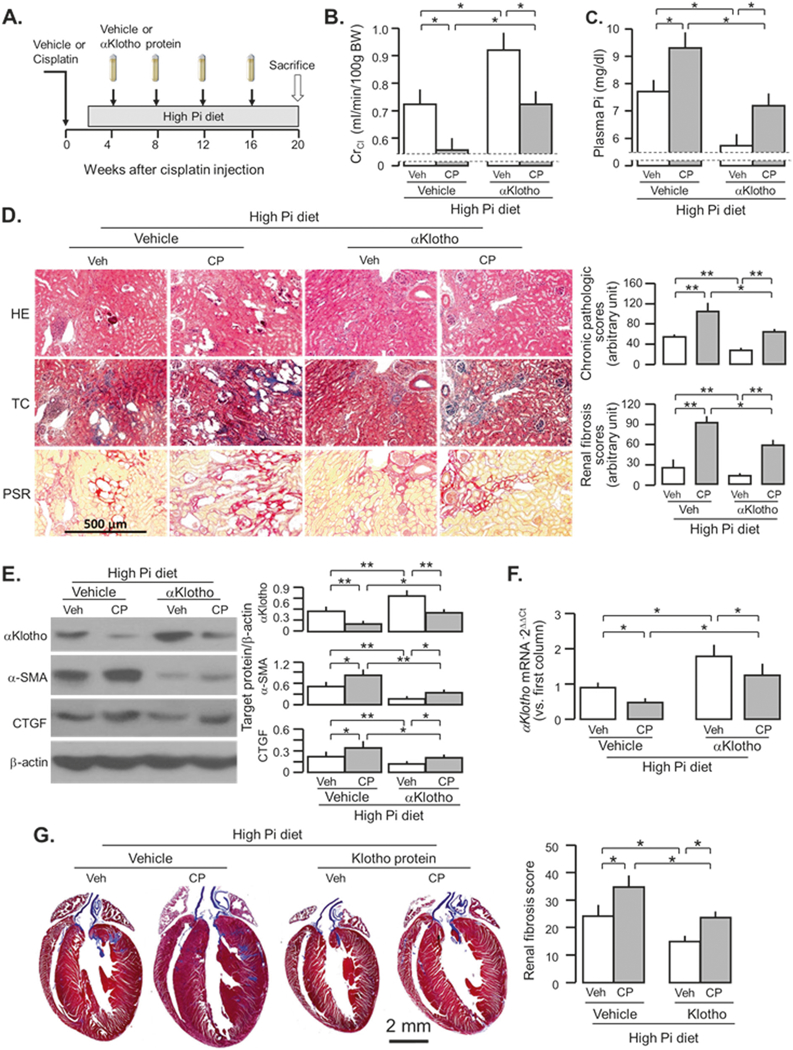Fig. 6.

αKlotho administration post-cisplatin (CP) injection retards AKI-to-CKD progression. a WT mice at 3 months old were intraperitoneally injected with CP (10mg/Kg) or normal saline as vehicle (veh) followed by feeding with high Pi diet in 2 weeks after the injection for 18 weeks. At 4 weeks after the injection, αKlotho protein or control buffer (normal saline) was given through osmotic mini-pumps for 16 weeks. At 20 weeks after the injection, mice were sacrificed and the kidneys, and urine and plasma samples were collected for further studies. b Creatinine clearance (ClCr). c Plasma phosphate (Pi). d Kidney histology assessed by HE, TC, and PSR stain (scale bar = 500 μm); and semi-quantitative assessment (right panel including chronic pathologic score based on HE stain and renal fibrosis score based on PSR stain). e αKlotho protein and fibrotic markers in the kidney. Left panel: representative immunoblot for αKlotho, α-SMA, and CTGF protein in total kidney lysates. Right panel: summary of all immunoblots. f αKlotho mRNA expression in the kidney lysate. g Cardiac fibrosis at 20 weeks after the injection. Left panel: representative Trichrome staining in heart sections, scale bar = 2 mm. Right panel: cardiac fibrosis score. Data are expressed as means ± SD from each group and statistical significance was evaluated by one-way ANOVA followed by Student–Newman–Keuls post hoc test, and significance was accepted when *P < 0.05; **P < 0.01 between two groups. HE Hematoxylin and Eosin stain; TC Trichrome stain; PSR Picrosirius red stain
